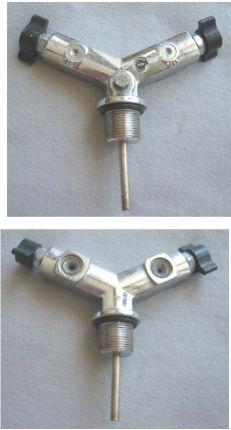A quality H-valve such as a Dive Rite or Thermo has little greater potential of failure than any than other options such as a K or J valve or doubles manifold.
Not to put too fine a point on it but "Phooey."
Without careful handling and monitoring, the joint between the "H" attachment and the modular valve doesn't represent a potential failure point, it's routine failure point. Torque limits on brass are serious business and the jam nut isn't always enough to hold everything together. Unlike a manifold attachment, the H attachment doesn't have any built in limit to how far it can spin once it gets started. It doesn't take much of a whack to loosen the thread tension, once that happens an H valve is going to fail. Since the K, Y and the antiquated and outdated J valves don't have the modular connection, there is no issue with them failing at that point.
People are going inside wrecks and caves with H valves thinking they're safe because the H valve offers them a redundant first stage. In reality, they've added a valve that is prone to failure when they bang into something.
Though I won't use them anywhere, H valves make some sense in cold water, where valve failure is less of an issue than first stage freeze-ups. They still need to be handled carefully and monitored closely.
Thermo DIN/K H Valve. Fail to monitor the jam nut closely or bang into something (or have something bang into you) and the assembly can start to unscrew, resulting in (a) a leak, and; (b) more excitement than most people want to deal with.
Thermo DIN/K Manifold for doubles. Best solution! Unlike an H, the manifold is held in place by the opposing modular valves. Even if the manifold starts to spin, it's kept from spinning too far.
Sherwood yoke Y - knobs are too small, poorly positioned, yoke only connection.
Beuchat DIN/K Y - bigger knobs, better position, accepts DIN or Y connections.





